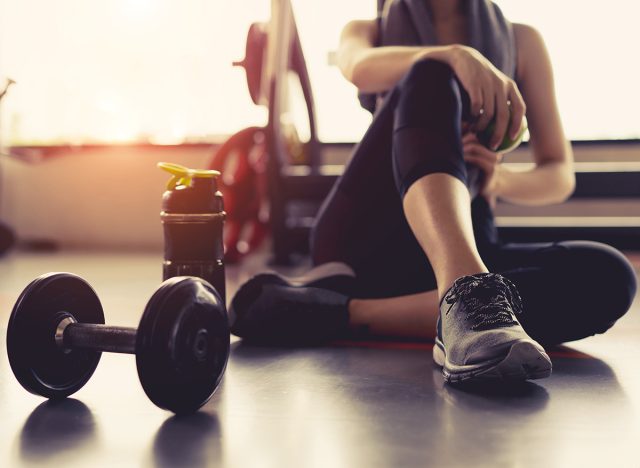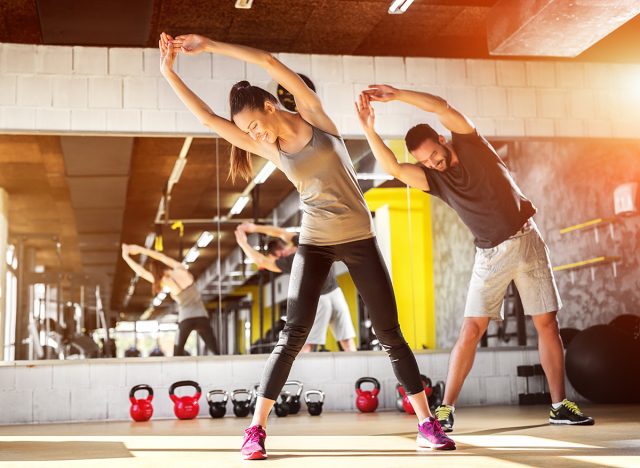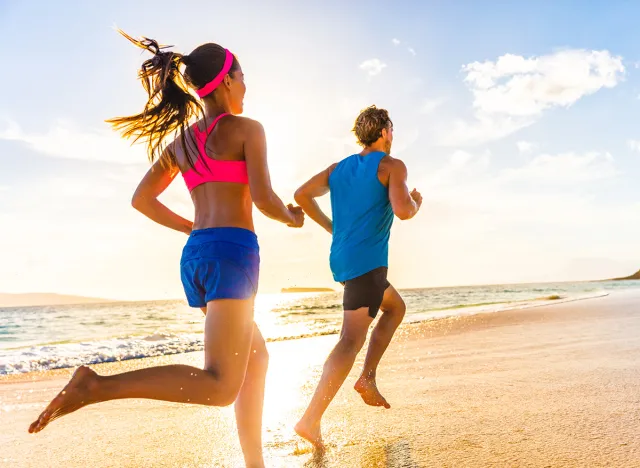3 Proven Methods to Get the Body You Want in 2024

Experts are unanimous: Clearly laying out your fitness goals is one of the keys to getting into – and staying – in shape. Many people opt to set New Year's resolutions before kicking off the next calendar year. However, you can set fitness goals anytime you want and there is no better time than the present. In two recent videos, Kelli Segars, who co-founded fitness channel and network Fitness Blender with her husband, Daniel, offers some helpful suggestions on setting your annual fitness goals and also tips on how to make them stick.
You Need a Goal That's Not Too Vague
In Part 1 of her two-part series, Kelli reveals three things to avoid when setting fitness goals, especially for those people who struggle to make it past four to six weeks of sticking to the plan. She says the first reason people usually fail to achieve their goals is because of three reasons. The first is that "your goal might be too vague," she says. "You may not have a concrete way of measuring it, so you don't know if you're actually moving forward or not."
Related: Influencers' Top 10 Foods For Weight Loss
You Need a Clear Plan

Number two, "you don't have a clear plan," she continues, which can lead to being overwhelmed, and "not taking the actions that actually move the needle and move you towards your goal."
You Should Plan For Obstacles

The third reason is that "you haven't accounted for obstacles and life happens," she says. "We'll run into these roadblocks and we need to see them ahead of time, factor them in and tweak as we go."
Make Your Plan Specific
In Part 2 of the series, she reveals three ways to make fitness goals stick. "At this point, you probably realize that resolutions just don't stick. Most people fall off the wagon by week six of their New Year's resolution." She says that her three tips can help you be in the minority of people who actually achieve success by sticking to their goals. "Number one, make sure your goal is specific and measurable," she suggests. "It's not enough to say, 'I want to work out more.' How often do you plan to work out and for how long? Let's make it concrete."
Related: I Ditched the Gym for Pilates & Walking to Achieve the Dream Body I Love
Plan for Mini Steps

The second tip is to "have a plan," she says. "Think through the mini steps that it will take to move the needle forward on a weekly basis, including anything you might need, like equipment, memberships, things like that."
Do Reality Checks

Her third and final tip? "Check in frequently," she explains. "If something isn't working, you want to find out ahead of time. It doesn't mean you can't reach your goal. You may just need to tweak the process a little bit for resources on achieving these rock-solid goals." A 2021 study conducted by the Perelman School of Medicine at the University of Pennsylvania and published in JAMA Cardiology supports Segars' recommendation. It found that when people set their own exercise goals – and then pursue them immediately – it's more likely to result in lasting positive changes.
Related: 20 Foods That Strip Belly Flab
Choose Your Goal

"Most behavior change programs involve goal-setting, but the best way to design that process is unknown," lead author Mitesh Patel, MD, MBA, an associate professor of Medicine at Penn and vice president for Clinical Transformation at Ascension, said in a press release. "Our clinical trial demonstrated that physical activity increased the most when patients chose their goals rather than being assigned them, and when the goals started immediately rather than starting lower and gradually increasing over time."
💪🔥Body Booster: When setting fitness goals, make sure they are specific and have a "clear plan" on how to achieve them. Also, if you find that they aren't working, don't give up: You are allowed to go back and tweak them.




